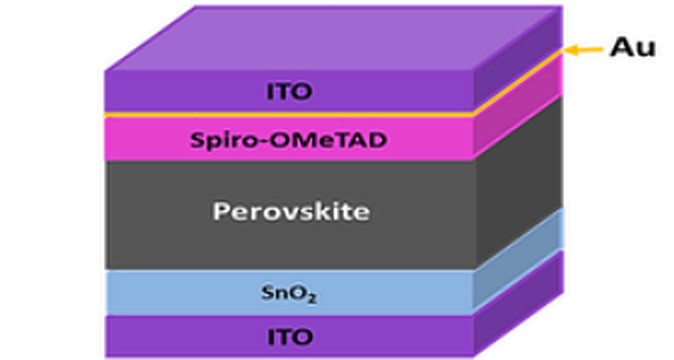Researchers at the Indian Institute of Technology Mandi (IIT-Mandi) have designed a bifacial perovskite solar cell for indoor environments that use multiple artificial lighting sources.
“Indoor bifacial photovoltaics (i-BPVs) offer the potential to surpass traditional monofacial photovoltaics (i-MPVs) in terms of power output per single cell, all without significantly increasing manufacturing expenses and while occupying less space,” the research's lead author, Ranbir Singh, told pv magazine. “We have developed i-BPV cell based on perovskite that can efficiently harvest maximum artificial indoor light from both the front and back sides of the modules.”
Singh and his research group described the solar cell in the study “Indoor bifacial perovskite photovoltaics: Efficient energy harvesting from artificial light sources,” published in Solar Energy.
They built the device with a semi-transparent substrate made of glass and indium tin oxide (ITO), an electron transport layer (ETL) relying on tin(IV) oxide (SnO2), a MAPbI3 perovskite layer, a spiro-OMeTAD hole transport layer, and a semi transparent electrode made of gold (Au) and ITO.
The scientists explained that the electrodes were designed to maintain transparency and improve artificial light harvesting from both sides. “For different Au/ITO layer thicknesses, the transmission decreases significantly with increasing Au layer thickness from 5 nm to 30 nm,” they added. Furthermore, they noted that the multilayer electrode (Au/ITO) exhibits a “good amount” of transmittance in the 450 nm to 800 nm wavelength range where most of the indoor light spectrum exists.
The researchers tested the bifacial cell under 1,000 lux LED light illumination and found it achieved a power conversion efficiency of 30.3%, an open-circuit voltage of 0.93 V, a short-circut current density of 148.3 μA/cm2 and a fill factor of 71.7%.
“The cell achieves a remarkable power output per single cell of 152.01 µW/cm2,” Singh stated. “Theoretical calculations suggest that bifacial devices have the potential to double the power generation at a 50% lower cost compared to their monofacial counterparts.”
According to the research team, the bifacial devices also showed a significant reduction in non radiative recombination losses, lower hysteresis and better operational stability in ambient air conditions compared to conventional monofacial PV structures. “The champion bifaciali cells display an excellent bifaciality factor of 0.73 and demonstrated superior operational stability when subjected to continuous illumination,” it also stated.
This content is protected by copyright and may not be reused. If you want to cooperate with us and would like to reuse some of our content, please contact: editors@pv-magazine.com.




Is the indoor panels available for sale